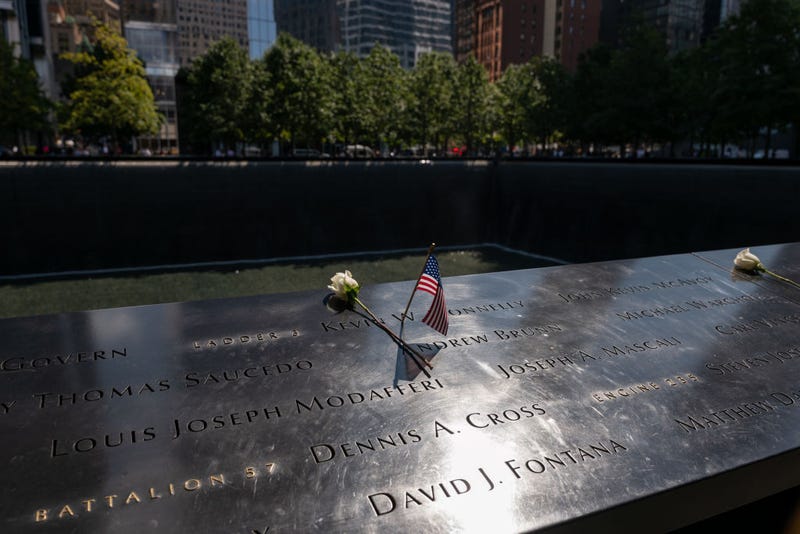
NEW YORK (1010 WINS) — Nearly 24 years after the Sept. 11 terror attacks, three additional victims have been identified, the New York City Office of the Chief Medical Examiner announced Thursday, in the unending quest to identify all remains recovered at Ground Zero.
Ryan Fitzgerald of Floral Park, New York, and Barbara Keating of Palm Springs, California, are the 1,651st and 1,652nd persons identified through family outreach and advanced DNA analysis.
Another adult woman became the 1,653rd person identified, though her identity is being withheld at the request of the family, officials said.
“To have had a family member who went to work at the World Trade Center that morning and never came home, and to have no remains to bury or to know concretely their family member was a victim, [identification] has enormous value,” Chief Medical Examiner Dr. Jason Graham told 1010 WINS.
Fitzgerald, a 26-year-old Long Islander turned foreign currency trader at Fiduciary Trust, was described as a “man on the town” who had just found his place in Manhattan in his obituary.
Keating, 72, was on American Airlines Flight 11 at the time of her death, returning to California from the East Coast where she was visiting her grandchildren, according to her obituary. She was a breast cancer survivor and described by her son Paul Keating as “someone you do not talk back to.”
“The pain of losing a loved one in the September 11th terror attacks echoes across the decades, but with these three new identifications, we take a step forward in comforting the family members still aching from that day,” Mayor Eric Adams said. “As a former law enforcement officer who served our city on 9/11, I understand deeply the feeling of loss so many families have experienced.”
The three new identifications were determined by DNA evidence processed at the medical examiner’s office DNA laboratory. Outreach to families for DNA reference samples continue as some 1,100 remains—about 40% of 9/11 victims—are still unidentified.
“Our commitment to identify the missing and return them to their loved ones stands as strong as ever,” Graham said. “Each new identification testifies to the promise of science and sustained outreach to families despite the passage of time. We continue this work as our way of honoring the lost.”
This year, the medical examiner’s office has also identified 22 human remains associated with previously identified individuals.
